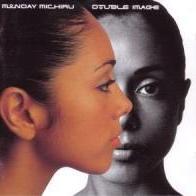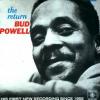
Big Beat Steve
Members-
Posts
6,617 -
Joined
-
Last visited
-
Donations
0.00 USD
Contact Methods
-
Website URL
http://
-
ICQ
0
Profile Information
-
Location
Southern Germany
Recent Profile Visitors
10,770 profile views
Big Beat Steve's Achievements
Proficient (10/14)
-
Rare
-
Rare
-
Rare
-
Rare
-
Rare
Recent Badges
-
To set straight an (inexplicably) oft-made blunder in that title: The ACTUAL song title (as per the flower and the color derived from it) is FUCHSIA Swing Song. ❗ Or just very much tuned in to music from past decades and aware of a lot (which should be a natural to anyone seriously interested in the heyday of jazz - though the above tune admittedly is not so jazz-ish ). (FWIW, personally I had not been born yet when Sheb Wooley hit the charts with that one, and yet ... )
-
With all these plugs, it looks like I'll have to watch out for that Brunswick 10-incher to come up in one of the special offer bins.;) (Stranger things have happened around here ...) (See, re- your misgivings in that other ("Reddit") thread, reviving this age-old thread didn't hurt at all ... 😁 and this might indeed lead to a new round of discussions ...)
-
Phil Schaap Archive
Big Beat Steve replied to Brad's topic in Jazz In Print - Periodicals, Books, Newspapers, etc...
Yes, what he (not wrote but) recycled is rather meager for someone who really ought to take an active interest in subjects like this. -
@Romualdo: I do not have the details on hand but this indeed seems to be so (if I remember correctly what James Harrod explained on his site). And in some cases the tracks were edited (truncated) on the EPs to fit them onto these 45s. @Jazzcorner: Of course in the end it is just the music that it's all about. My point was just that these EPs pressed in Europe back then are an intriguing side aspect of these JWC sampler releases (and their marketing history) that merits some exploration (in my opinion). I referred to the JWC LPs in the title of my thread simply because the FIVE SAMPLER LPs titled specifically "Jazz West Coast" and their contents were the starting point for my question about which of their contents were also released on EPs culled from THESE LPs. (The "other" Pacific Jazz EPs were an afterthought) So IMO dwelling on what LPs there were overall (this was discussed before in another thread) and stating what LPs one owns seems a bit beside the point to me in THIS thread.
-
That's all very well, but to me they ARE (of interest). Tastes and interests differ, you know ... LPs are a different topic and have been covered in extenso in numerous publications (and FWIW were not the target or subject of this thread anyway). But EPs are part of the way the music was marketed at the time as well. And they were overlooked for no good reason. Thankfully James Harrod set the record(s - literally ) straight.
-
T-shirts for fans of 78rpm
Big Beat Steve replied to rostasi's topic in Miscellaneous - Non-Political
Just trying to put every "banana" cliché into that "generic" drawing on the banana theme ... -
I think I will be listening to this tune with totally "new" ears from now on. And belated birthday wishes to you.
-
T-shirts for fans of 78rpm
Big Beat Steve replied to rostasi's topic in Miscellaneous - Non-Political
Nice idea. But are all of them really that specific to the 78 rpm era? (e.g. TOPS or GTJ) And "Brandt" must have been one that found its way into the range because some client ordered a one-off in the first place. (This seems like a REALLY oddball label - with graphics that are not likely to make many - except fanatics of this specific label - go overboard with excitement). Speaking of one-off record label T-shirts, about 12 years ago my better half and me took a lindy hop basics class. One of the side events to liven up the sessions was a "theme" record party focusing on "bananas". So I had the below shirts made for the two of us for the occasion (drew up the banana couple based on a photo of a dancing couple I had taken years ago). -
Thanks, Cliff and Rostasi, for these infos. I was actually thinking of a regional or academic/University library. I've had reader cards for both of our local ones but have not been there so long that I probably would have to sign up again from scratch. So I guess I'll have to see how I can contact the two GERMAN sites (shown by Rostasi) via our library. Actually, the other day I was on the verge of springing for an affordable original Danish copy of Rosenkrantz' book available online. But in the end I decided against it - not only because reading Danish is a bit more difficult for me than Swedish, at which I am fairly advanced. But what is more, the English version seems to have been expanded considerably over the Danish original, judging by the page counts. BTW, Cliff, on a (tongue-in-cheek) side note - that "other" autobiography you mention is by Teddy Reig, not Teddi. That "Teddi" might (involuntarily yet incorrectly) allude to a different sex (e.g. Teddi King ).
-
Yeah, right. And that was almost all the way in the 78 rpm era (1951). Great film. Thanks for the link. Too bad the image is so blurred (14th-generation recopy? ) No way to capture well enough the details (records, etc.) of the scenes at the HMV shop. But the music snippets (right up to Barber, the crooners and Lord Rockingham) are fitting (and hilarious, as you say ...).
-
When I referred to listening "booths" I was actually referring to such booths. Which did exist, judging both by testimonials from some who were around in those days, period photos and ads and by certain period films where a listening booth was part of certain scenes of the plot. I dimly remember that there even was a Hitchcok crime movie that had such a scene. And I more distinctly remember both German and French movies from the late 50s/early 60s that were geared at a youth/teenage audience where you had scenes with rows to teens listening to record over those "telephone receiver" type headphones (very similar to the record shop from 1958 I showed above). But my MAIN point about these record shops "in the days of old" was about those shops where the bulk of the records were stored BEHIND the counter and you went to the counter and asked the clerk if he/she had this or that record or if they were able to suggest you new arrivals by certain artists or items in your preferred styles of music, and they then pulled them from the racks behind them to show them to you (and play them too, if the customer so wished). And this is where the listening booths (as part of period shop furniture) came in too and were mentioned by me. All of this triggered by the post about the character in L.A. who would not let customers browse the bins but forced them to tell him beforehand what they were looking for. The Technics turntables in our local secondhand shop BTW look and sound OK and well cared for. I agree that the headphones make the records sound incredible - but OTOH I hardly ever listen to records through headphones at home.
-
By all accounts they must have existed, judging by the tales (tall tales?) of youngsters of bygone decades who cherished their memories of piling half a dozen high into a booth after school to listen to a stack of the latest hit parade platters, and then buying maybe one single or none at all ("ah no, not actually my cuppa") until even the most sympathetic shop owner would kick them out of his place. I don't know how long these booths lasted after (circa) 1960 (if at all), though. Also see the below record sleeve from the 78rpm era.
-
I can tell you that over here listening facilities at regular record shops (when there still were NEW records to be sold and therefore a certain number of record shops) went out of operation here sometime in the latter 70s. The only one local shop I remember that still had listening facilities (those "telephone receiver"-type thingies at the counter) was a long-established shop but by those later 70s the listening service had been modernized and trimmed down severely compared to the below photograph (which shows the same place in a photo from a 1958 product catalog). No other shops in town offered any possibility of listening in before purchase anymore. To the best of my understanding, actual listening BOOTHS in record shops were phased out long, long before. In the more recent era of shops dealing in secondhand records, listening facilities do not exist everywhere either. Our #1 local secondhand shop is a commendable exception and has a corner setup in plain sight of the counter where 2 Technics turntables with headphones are set up for the customers to listen to the records before purchase. Turntables operated by the customers themselves on the understanding that common sense and discretion be applied ("use the pickup arm lift at all times", i.e. don't put the pickup onto the record with you grubby, clumsy fingers! ), though I am baffled ever so often when I see how hard it seems to be even for so many of the (usually) discerning and knowledgeable clientele of the shop to pull the record out of its sleeve and hold it ONLY with an "octave grip" and not by placing their clumsy thumbs onto the grooves ... So ...
-
Of course thumbing through boxes can be tempting regardless of the overall layout of the shop. But it all depends on whether records for browsing were in boxes in that shop at that time anyway. I know (now, and knew in the past) more than one shop where record stocks simply were overflowing in all directions and lots of records were in boxes placed outside the actual bins (sometimes even piled for the customers to shift them themselves if they wanted to peruse the contents of all the boxes). So that customer had only himself to blame for being called to order but I'd cut him (and his "record hunter instinct") some slack.
_forumlogo.png.a607ef20a6e0c299ab2aa6443aa1f32e.png)







